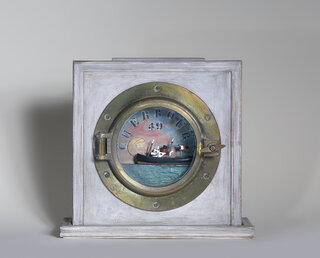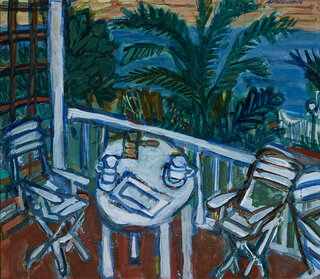
© Pamina Liebert-Mahrenholz estate
Perhaps named after the daughter of the Queen of the Night in The Magic Flute (her father was an admirer of Mozart), Pamina Liebert, was born in Berlin in 1904 and later studied under Fritz Klimsch at the Berlin Academy of Art. She was awarded the Prix de Rome in 1931, but heavy Nazi opposition (given her Jewish identity) prevented her from collecting her prize. She married photographer Rolf Mahrenholz in 1929, and after her husband's emigration to England in 1938, followed him in 1939. Initially imprisoned in Holloway Women's Prison, she was moved to one of the women's internment camps on the Isle of Man, where her husband was held in a separate camp. During internment she sculpted from bread - another example of the resourcefulness of interned artists who turned to non-traditional materials (Schwitters sculpted in his camp room with left-over porridge which became mouldy and smelled). Although Liebert-Mahrenholz's modernist painting was made many years after internment, the dove as a potent symbol of peace was often incorporated in artwork by internees, such as the eminent graphic designer F H K Henrion, whose simplified modernist bird appeared in the pages of the Onchan Pioneer, a design later repurposed for the AIA (Artists International Association).




